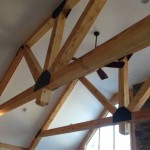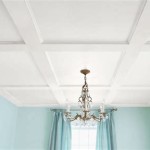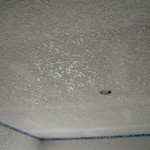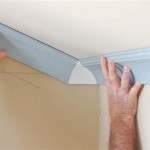How To Install Crown Molding On A Cathedral Ceiling
Installing crown molding can significantly enhance the aesthetics of any room, adding a touch of elegance and sophistication. However, installing crown molding on a cathedral ceiling presents unique challenges compared to standard flat ceilings. The angles involved are more complex, requiring precise measurements, careful cuts, and a methodical approach. This article provides a comprehensive guide to installing crown molding on a cathedral ceiling, ensuring a professional and visually appealing result.
Before embarking on this project, it is crucial to understand the specific angles of the cathedral ceiling. Unlike a 90-degree intersection where the wall meets the ceiling, cathedral ceilings feature an angled intersection. These angles can vary depending on the design and construction of the roof. Therefore, accurate measurement is paramount to achieving a seamless fit. Tools like a protractor, angle finder, or digital level are essential for determining these angles.
Once the angles are determined, the next step involves calculating the appropriate miter and bevel angles for each cut. This process requires a understanding of compound miter saw settings. The crown molding sits at an angle against the fence and the saw table, requiring both miter and bevel adjustments. There are numerous online calculators and charts available that can assist in determining these angles based on the measured wall and ceiling angles. These resources eliminate guesswork and minimize the risk of errors.
Furthermore, selecting the right type of crown molding is vital. While various materials are available, including wood, polyurethane, and MDF (Medium-Density Fiberboard), each offers distinct advantages and disadvantages. Wood provides a classic and natural look, but it is susceptible to moisture and can be more challenging to work with. Polyurethane is lightweight, moisture-resistant, and easy to cut, making it a popular choice for DIY projects. MDF is a cost-effective option, but it is also susceptible to moisture damage and requires careful sealing and painting. The choice of material depends on budget, skill level, and the specific requirements of the installation environment.
Planning and Preparation: The Foundation for Success
Proper planning and preparation are arguably the most crucial aspects of any crown molding installation, especially on a cathedral ceiling. This stage involves gathering the necessary tools and materials, accurately measuring the angles, and creating a detailed cutting plan. Failing to adequately prepare can lead to wasted materials, frustration, and a less-than-perfect final result.
The essential tools for this project include a miter saw (preferably a compound miter saw), a measuring tape, a protractor or angle finder, a level, a pencil, a stud finder, a nail gun or hammer and nails, wood glue, caulk, and safety glasses. A compound miter saw allows for both angle and bevel cuts, which are necessary for creating the precise joints required for crown molding on cathedral ceilings. A stud finder is crucial for locating wall studs, providing a solid base for attaching the molding.
Accurate measurement is paramount. Use a protractor or angle finder to determine the exact angle where the wall meets the ceiling. Record these measurements carefully, as they will be used to calculate the miter and bevel angles for each cut. Multiple measurements at different points along the wall and ceiling are advisable, as slight variations can occur. Averaging these measurements can provide a more accurate representation of the overall angle.
Once the measurements are taken, create a detailed cutting plan. This plan should include a diagram of the room, indicating the length of each piece of crown molding and the corresponding miter and bevel angles required for each cut. Label each piece clearly to avoid confusion during the cutting process. This plan serves as a roadmap, minimizing the risk of errors and ensuring a smooth and efficient installation.
Before cutting any molding, prime and paint it. Painting the molding before installation is often easier than painting it in place, because you will have more accessibility to all sides of the molding. Touch-ups can be done following the installation.
Cutting Crown Molding: Mastering the Compound Miter Saw
Cutting crown molding, especially for a cathedral ceiling, requires precision and a thorough understanding of how to use a compound miter saw. The compound miter saw allows for making both miter and bevel cuts simultaneously, which are essential for creating the accurate joints needed for this type of installation. Understanding how to interpret the angles and translate them to the saw settings is critical.
Before making any cuts, practice on scrap pieces of molding. This allows you to familiarize yourself with the saw settings and techniques without wasting valuable material. Adjust the miter and bevel angles according to your cutting plan, ensuring that the saw is properly calibrated. Always double-check the saw settings before making each cut to avoid errors.
When cutting crown molding, it is important to consider the "spring angle" of the molding. The spring angle refers to the angle at which the molding sits against the wall and ceiling. This angle is typically either 45 degrees or 52 degrees. When cutting crown molding "nested" against the fence of the miter saw, the top of the molding will rest against the fence, and the bottom of the molding will rest on the saw table. This is the standard way to cut crown molding and ensures the most accurate results.
Pay close attention to the direction of the cut. Inside corners require the molding to be cut so that the back of the molding is longer, while outside corners require the molding to be cut so that the front of the molding is longer. Remember to cut slightly long and then fine tune the piece as needed. It's easier to take a little more off than to make a piece too short.
Always use caution when operating a miter saw. Wear safety glasses to protect your eyes from debris, and keep your hands clear of the blade. Use clamps to secure the molding in place to prevent it from moving during the cut. Take your time and focus on accuracy, as even small errors can accumulate and result in gaps and misaligned joints.
Installation and Finishing: Achieving a Professional Look
The installation phase involves attaching the cut pieces of crown molding to the walls and ceiling. This requires careful alignment, secure fastening, and attention to detail. Consistent spacing and flush joints are key to achieving a professional and seamless look. The finishing touches, such as caulking and painting, further enhance the overall appearance and conceal any minor imperfections.
Begin by installing the longest pieces of crown molding first. This provides a stable base for the remaining pieces and simplifies the alignment process. Use a stud finder to locate the wall studs and mark their positions. This ensures that the nails or screws are securely anchored to the framing, providing maximum support for the molding. Apply a bead of wood glue to the back of the molding before attaching it to the wall and ceiling. This provides additional adhesion and helps to prevent the molding from shifting over time.
When attaching the molding, use a nail gun or hammer and nails to secure it to the wall studs and ceiling joists. Drive the nails at an angle to increase their holding power. Space the nails approximately 12 to 16 inches apart, ensuring that the molding is firmly attached along its entire length. Use a level to ensure that the molding is installed perfectly straight and that the top and bottom edges are flush with the wall and ceiling.
Pay close attention to the corners. Carefully align the mitered joints, ensuring that they are tight and seamless. If necessary, use clamps to hold the corners in place while the glue dries. After the glue dries, fill any small gaps or imperfections with wood filler. Sand the wood filler smooth and then apply a coat of primer. Finally, paint the crown molding to match the existing trim or wall color. Use a high-quality paint that is specifically designed for trim and molding. Apply multiple thin coats of paint, allowing each coat to dry completely before applying the next. This will result in a smooth, even finish.
Once the installation is complete, caulk all the seams and joints. This will conceal any remaining gaps and create a clean, professional look. Use a paintable caulk that is specifically designed for interior trim. Apply the caulk in a thin, even bead and then smooth it with a damp sponge or cloth. Allow the caulk to dry completely before painting over it.
By following these detailed instructions, homeowners can successfully install crown molding on a cathedral ceiling, adding an elegant and sophisticated touch to their living space. The key to success lies in careful planning, accurate measurements, precise cuts, and attention to detail. With patience and perseverance, anyone can achieve professional-looking results and enjoy the beauty of crown molding for years to come.

How To Install Crown Molding On A Vaulted Cathedral Ceiling Without Transition Piece

How To Install Crown Molding On Vaulted Or Cathedral Ceilings The Joy Of Moldings

Installing Crown Molding Around A Cathedral Ceiling Fine Homebuilding

Installing Crown Moulding Part Two Canadian Woodworking

Installing Crown Moulding On A Sloped Ceiling Doityourself Com Community Forums

Crown Moulding On Angled Ceiling Sawdust Girl

Install Crown Molding Cathedral Vaulted Ceiling

Install Crown Molding Cathedral Vaulted Ceiling

Crown Molding On Angled Ceilings Makely
How To Cut A Crown For Vaulted Ceilings Quora
Related Posts








